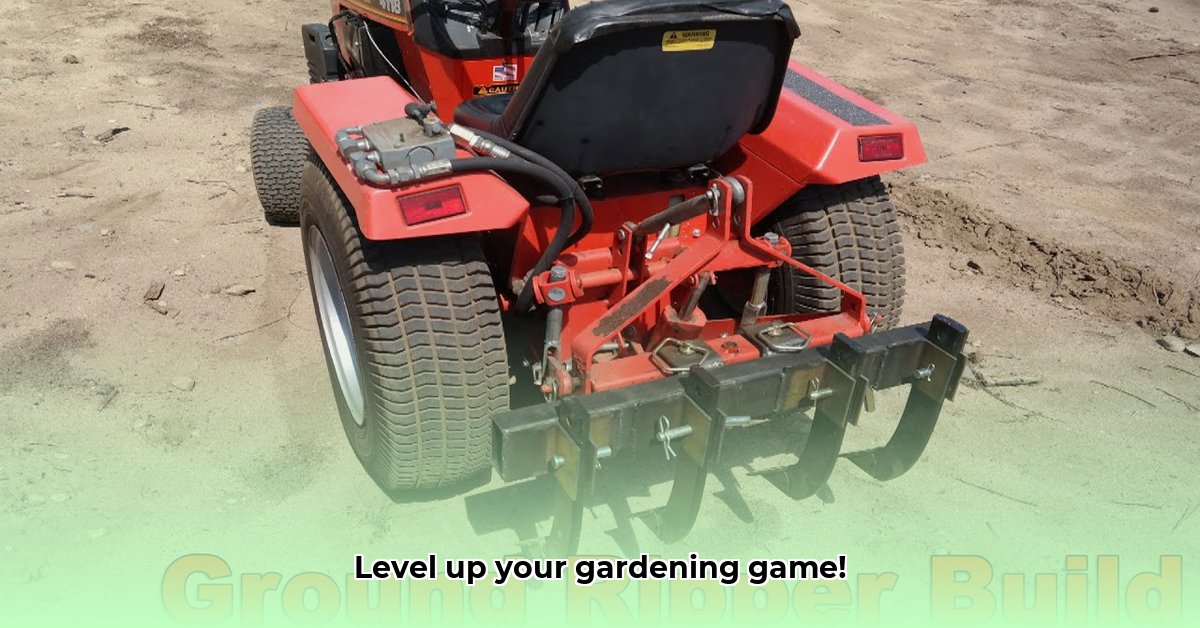
Tired of back-breaking garden work? Want a healthier, more productive garden? A rototiller attachment for your lawn tractor can revolutionize your gardening experience. This comprehensive guide helps you choose the right attachment, install it safely, and use it for optimal results, all while focusing on sustainable practices. We will cover everything from selecting the perfect tiller for your lawn and soil type to mastering fuel-efficient tilling techniques. For more tiller options, check out this helpful resource: tractor tillers.
Choosing the Right Rototiller Attachment
Selecting the optimal rototiller attachment is crucial. The wrong choice can lead to inefficient tilling or even damage your lawn. Several key factors influence your decision. Do you need a commercial-grade rototiller or a more affordable residential model?
First, assess your garden's size. Larger gardens benefit from wider tillers for quicker coverage. Smaller gardens or intricate flowerbeds require narrower, more maneuverable models.
Next, consider your soil type. Heavy clay soil demands a robust tiller with strong tines. Lighter, sandy soil can be effectively worked with a lighter-duty tiller. Using the incorrect tiller can lead to inefficient tilling or even damage to the equipment.
Finally, budget considerations are key. Prices vary widely depending on features, size, and brand. Compare prices from Tractor Supply Co. and Lowe's (and other retailers) to find the best value.
Here's a comparative table to assist your decision-making process. Note that prices and models may vary; always check current offerings at your local retailers.
| Feature | Option 1 (Example) | Option 2 (Example) | Option 3 (Example) |
|---|---|---|---|
| Working Width (inches) | 30 | 40 | 24 |
| Tine Type | Heavy-duty | Standard | Lightweight |
| Ideal Soil Type | Clay, heavy soil | Various | Sandy, loose soil |
| Estimated Price Range | $300 - $400 | $400 - $500 | $200 - $300 |
Installing and Maintaining Your Rototiller Attachment
Installing your rototiller is usually straightforward, but always consult your lawn tractor and tiller manuals for specific instructions. Safety is paramount; always disconnect the power before any maintenance or installation.
Step-by-Step Installation:
- Safety First: Turn off your lawn tractor and ensure the PTO (Power Take-Off) is disengaged. This prevents accidents.
- Secure the Attachment: Align the tiller's mounting points with your tractor's hitch. Use the provided bolts and pins to firmly secure the tiller. Double-check all fastenings.
- Connect the PTO Shaft: Carefully connect the PTO shaft from the tractor to the tiller, adhering precisely to the manufacturer's instructions. This transmits power.
- Lower the Tiller: Gently lower the tiller to your desired depth. Start shallow and adjust as needed.
- Test Run: Start the tractor and engage the PTO. Begin tilling slowly, continuously monitoring the process. Adjust as needed for smooth, efficient tilling.
Routine Maintenance:
- Lubrication: Regularly lubricate all moving parts. This prevents wear and tear and ensures smooth operation.
- Sharpening: Periodically sharpen the tines. Dull tines reduce efficiency and can damage your soil.
- Inspection: Inspect the tiller after each use for damage or wear. Addressing small issues prevents bigger problems.
Best Practices for Sustainable Tilling
Sustainable tilling is vital for long-term soil health. Over-tilling disrupts soil structure, reducing its ability to retain moisture and nutrients, and harming beneficial organisms.
For healthy soil:
- Minimize Tillage: Till only as deeply as necessary, avoiding excess tilling.
- Cover Crops: Plant cover crops between growing seasons to protect soil, add organic matter, and improve soil structure.
- No-Till Areas: Consider leaving some areas untilled to boost biodiversity.
- Crop Rotation: Rotate your crops annually to maintain soil fertility.
Real-World Success Stories
"My garden's completely transformed since I got my rototiller!" says John, a local gardener. "Soil prep is a breeze, and my harvests have never been better!" This showcases a rototiller's potential for improved efficiency and better yields.
Wrapping Up
Investing in a rototiller attachment is an investment in a healthier, more productive garden. By following these guidelines on selection, installation, maintenance, and sustainable practices, you can enjoy a more rewarding gardening experience. Remember to always consult your equipment manuals. Happy gardening!